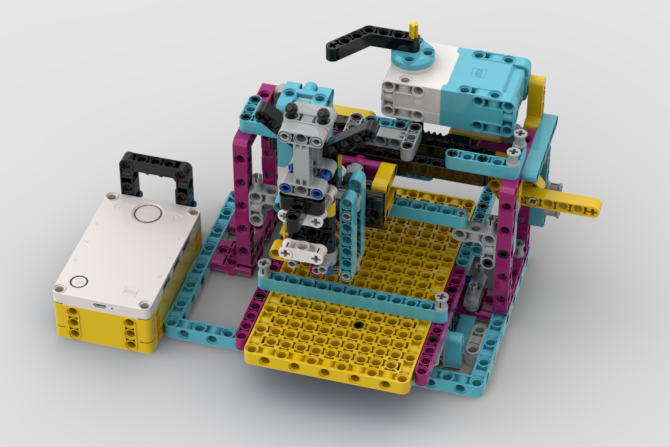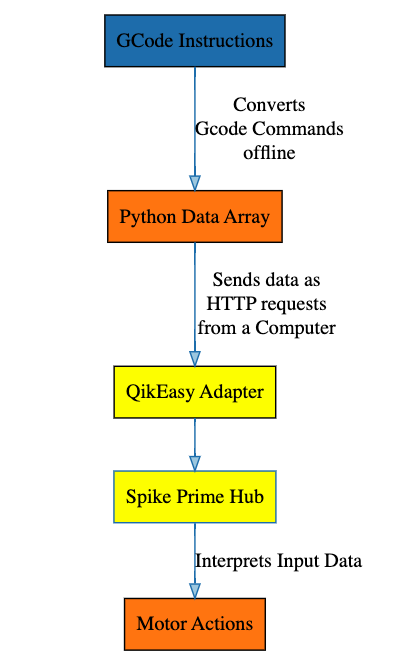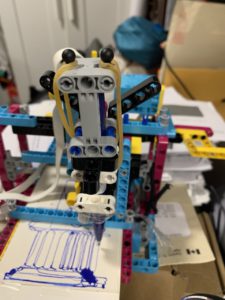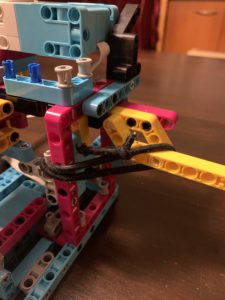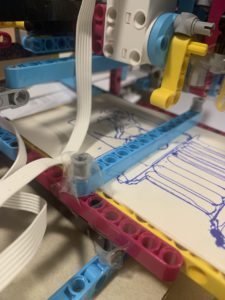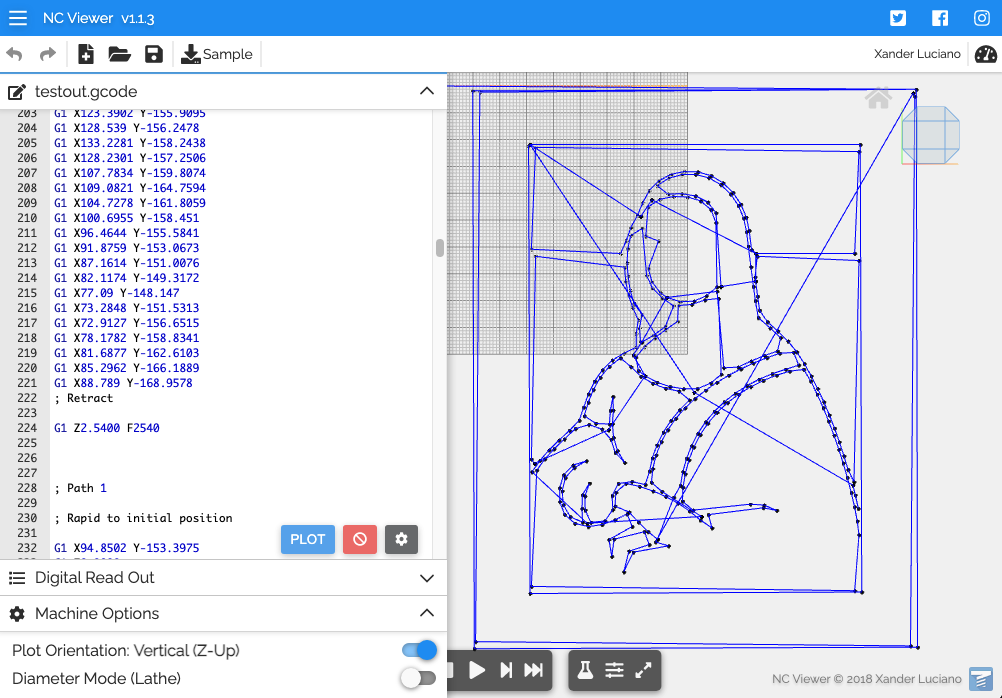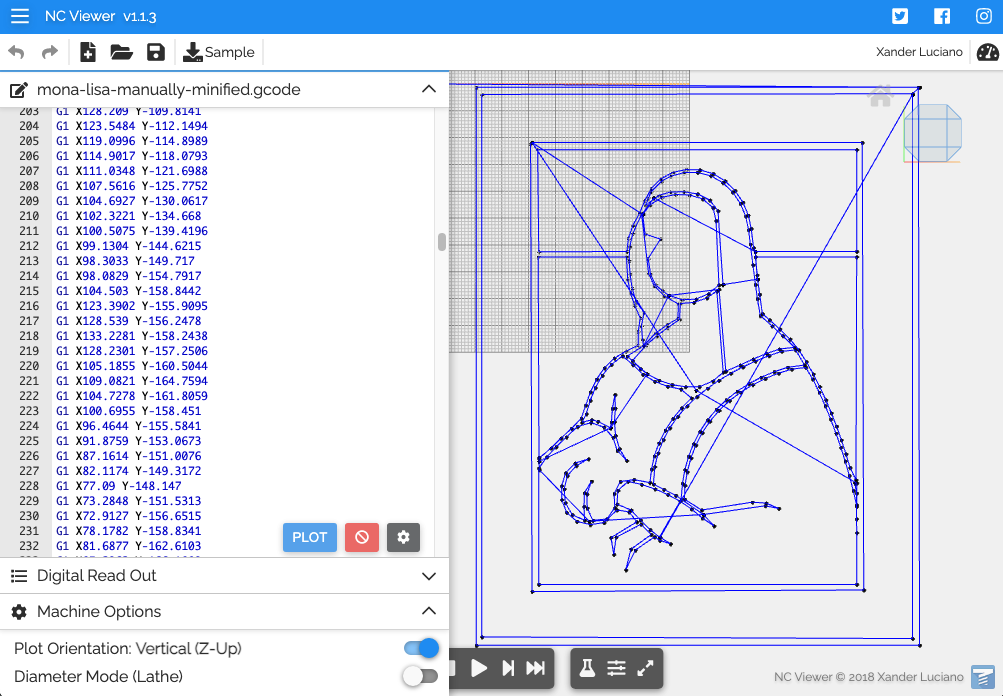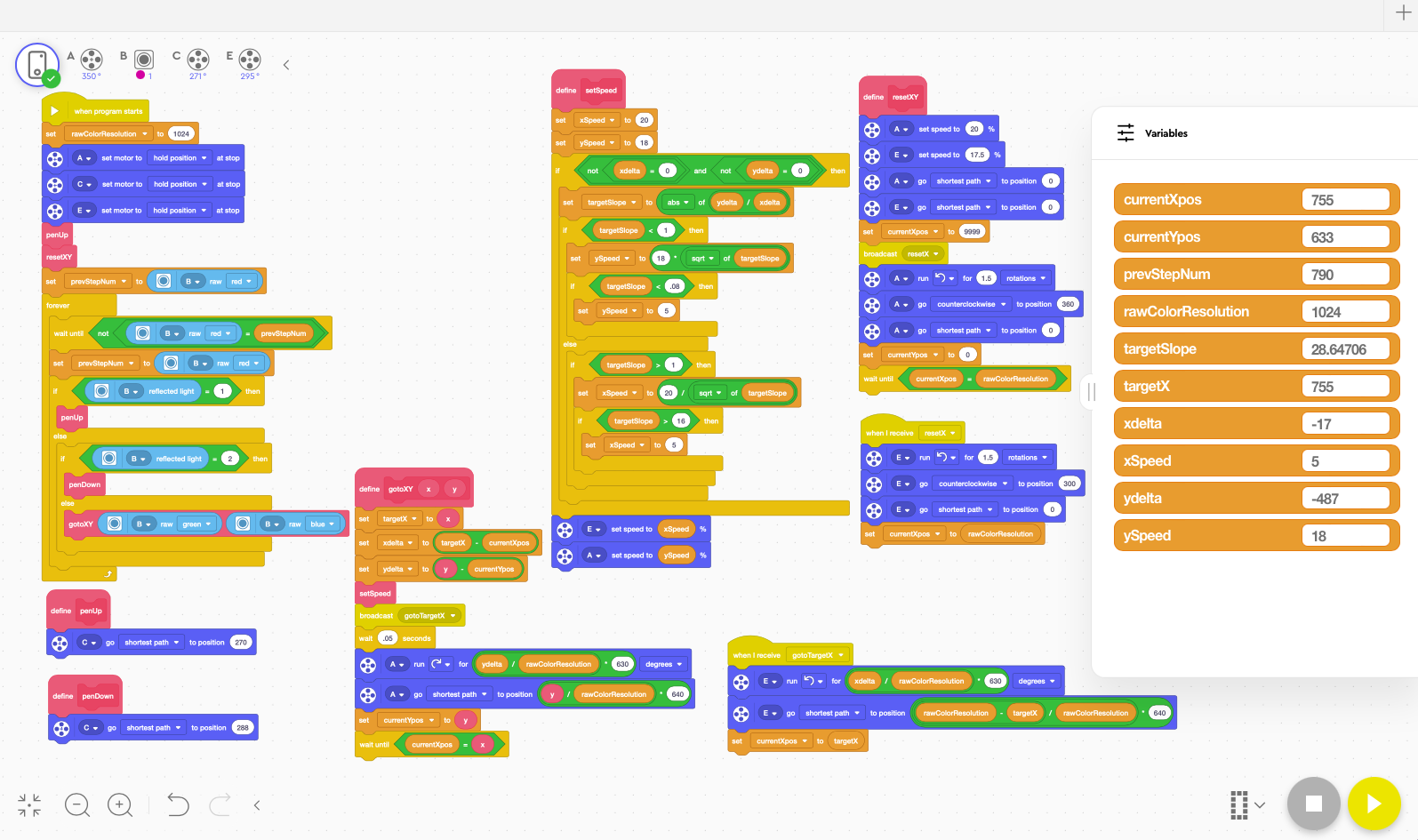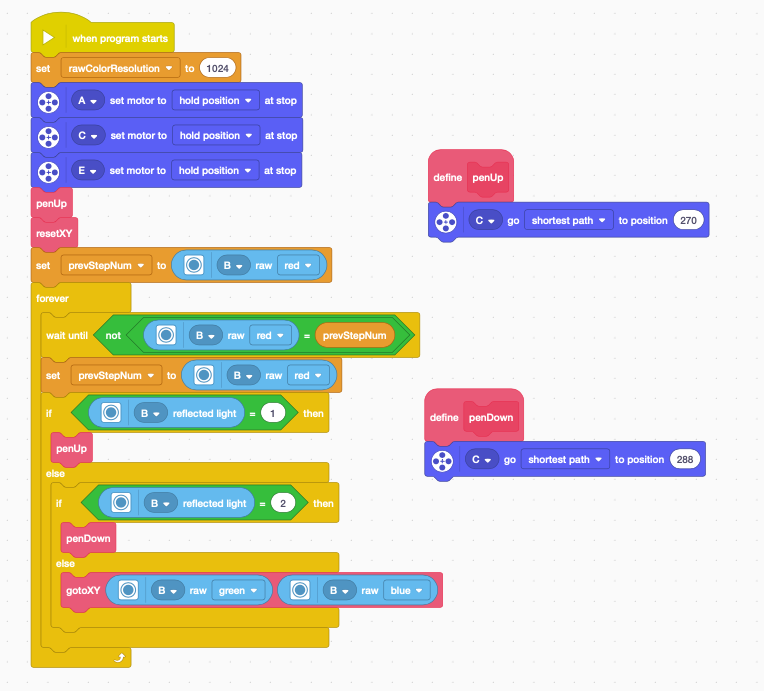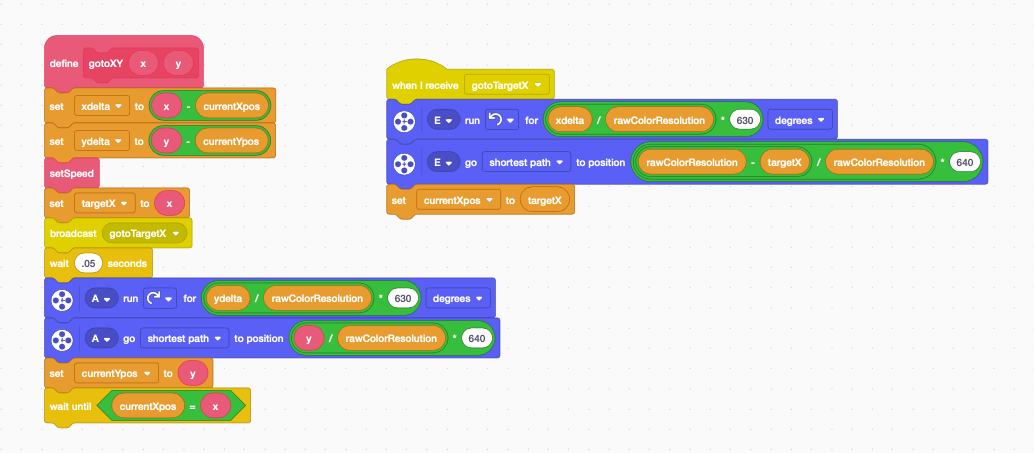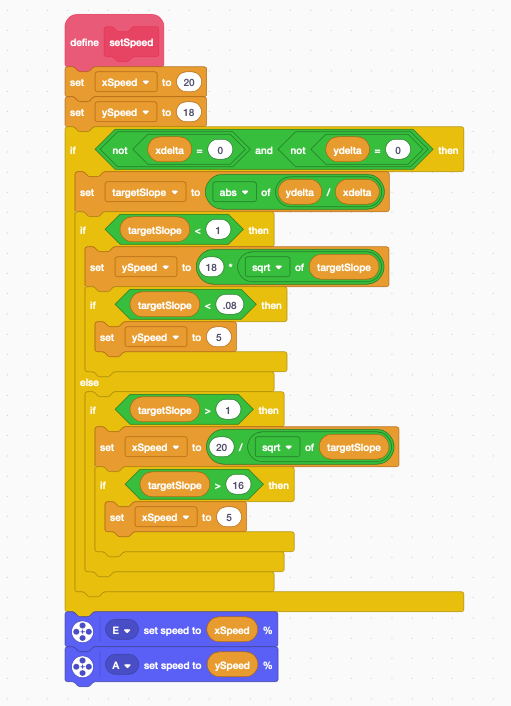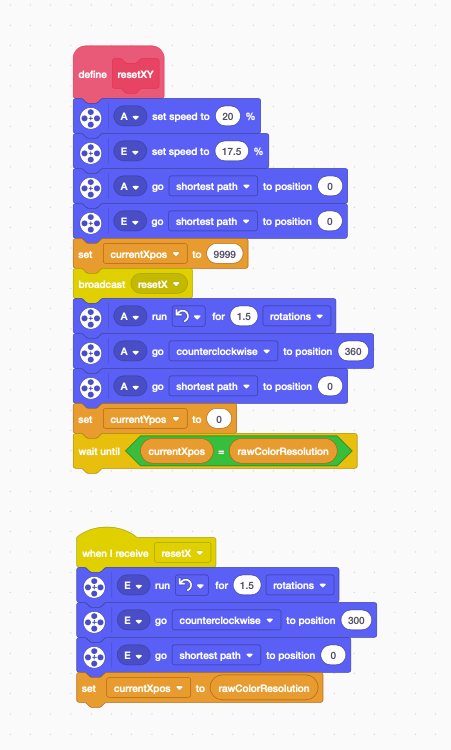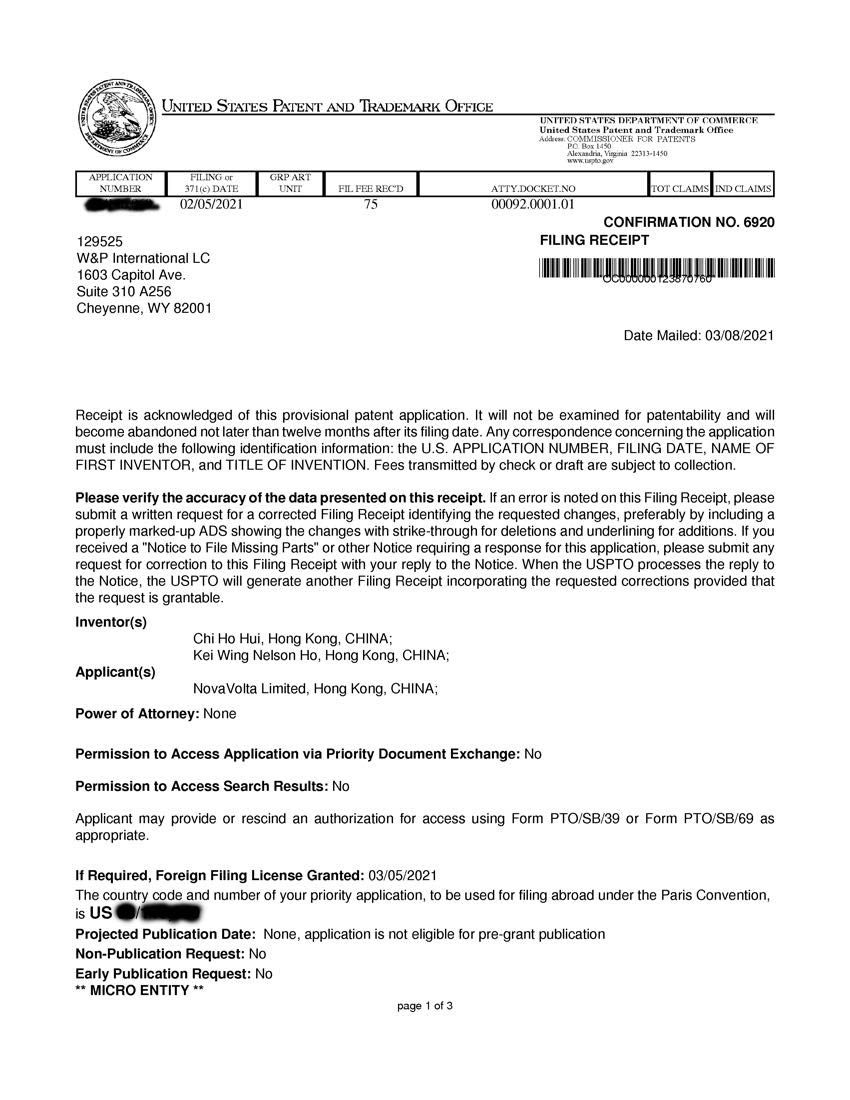###################################################################
# plotGcode.py
#
# python plotGcode.py [render or plot] [input gcode file name]
###################################################################
import matplotlib.pyplot as plt
import time
import sys
import os
import requests
import math
import random
VIRTUAL_SENSOR_IP_ADDRESS = "192.168.11.162"
constOutputMaxRange = 1024
# Global Variables
mode = "render"
prevPos=(1024,0)
penUp = False
stepId = 0
# Check if there are enough arguments
if len(sys.argv) != 3:
print(f"Usage: python {sys.argv[0]} [render or plot] [input gcode file name]")
exit()
if not(sys.argv[1]=="render" or sys.argv[1]=="plot"):
print(f"Second parameter must be 'render' or 'plot'.")
exit()
# Check if the file exists and is readable
if not(os.path.isfile(sys.argv[2]) and os.access(sys.argv[2], os.R_OK)):
print(f"The file {filename} does not exist or cannot be read!")
exit()
# Get the input parameters
mode = sys.argv[1]
filename = sys.argv[2]
#==========================================
# Calculate distance between two points
#==========================================
def distance(point1, point2):
x1, y1 = point1
x2, y2 = point2
return round( math.sqrt((x2 - x1) ** 2 + (y2 - y1) ** 2), 1 )
#==========================================
# Generate a random between 1 to 255 that doesn't equal to prev number
#==========================================
def my_random_number(prevRandomNumber):
while True:
newRandomNumber = random.randint(1, 255)
if newRandomNumber != prevRandomNumber:
break
return newRandomNumber
#==========================================
# command possible input values:
# when 0 => position
# when 1 => up (i.e. 11 in raw)
# when 2 => down (i.e. 22 in raw)
#==========================================
def sendPlotCommand( command, x, y ):
global stepId
reflection = 0
if command == 1:
reflection = 11
elif command == 2:
reflection = 22
stepId = my_random_number(stepId/255*1024)
endpoint = f"http://{VIRTUAL_SENSOR_IP_ADDRESS}/set?t=c&r={stepId}&g={x}&b={y}&R={reflection}"
requests.get( endpoint )
#print( endpoint )
#==========================================
# Receive point command either for rendering on screen or for plotting on our xy plotter
#==========================================
def execPointCmd(point):
global prevPos, penUp
# Pen up/down command
if point[1] == 9999:
if point[0] > 0:
penUp = True
if mode == "plot":
sendPlotCommand(1, 0, 0)
time.sleep( 0.8 )
else:
penUp = False
if mode == "plot":
sendPlotCommand(2, 0, 0)
time.sleep( 0.8 )
# Set xy position
else:
# When Pen Down
if penUp == False:
# If it's not the start of a line
if prevPos[0] != -9999:
if mode == "render":
plt.plot( (prevPos[0], point[0]), (prevPos[1], point[1]), color='black')
# Perform Plot movements
if mode == "plot":
sendPlotCommand( 0, point[0], point[1] )
motionDuration = distance(prevPos, point) / 200 + 0.2
#print ( f"duration= {motionDuration} for line from ({prevPos[0], prevPos[1]}) to ({point[0], point[1]})")
time.sleep( motionDuration )
prevPos = point
# Global Variables
minX = 9999
minY = 9999
maxX = 0
maxY = 0
# The buffer array that will be used to store our output data
points = []
with open(filename, 'r') as f:
# Loop through each segment
for line in f:
# G1 lines are the lines that is responsible for moving the plotter xyz location
if line.startswith('G1'):
# Handle lines with XY values first
x_str = line.split('X')[-1].replace('\t', ' ').split(' ')[0]
try:
x = float(x_str)
y_str = line.split('Y')[-1].replace('\t', ' ').split(' ')[0]
y = float(y_str)
points.append((x, y)) # append to points[] array
# Update minX, minY, maxX, MaxY values
if ( x > maxX ):
maxX = x
if ( y > maxY ):
maxY = y
if x < minX:
minX = x
if y < minY:
minY = y
except ValueError as err:
# Handle Z movement lines
try:
z_str = line.split('Z')[-1].replace('\t', ' ').split(' ')[0]
z = float(z_str)
points.append((z, 9999)) # append to points[] array
except ValueError:
pass
# Calculate width and height of drawing
maxW = maxX - minX
maxH = maxY - minY
# Calculate the scaling factor in order for the drawing to fit into 1024 range.
# Also calculate offset in order to center the image in the square plot platform
scaleFactor = maxW
if maxH > maxW:
scaleFactor = maxH
if maxH < maxW:
offset = (maxW - maxH) * constOutputMaxRange / scaleFactor / 2;
else:
offset = (maxH - maxW) * constOutputMaxRange / scaleFactor / 2;
# loop through each item in the array again
for i, point in enumerate(points):
# NOT Command to set Pen up or down
if point[1] != 9999:
# Scale and shift the position into the (0,1024) range.
# shifting to start from 0 with no negative values
point = ( point[0] - minX, point[1] - minY )
# Scale segment so that the coordinate fits in the ( constOutputMaxRange x constOutputMaxRange ) grid
point = ( point[0] * constOutputMaxRange / scaleFactor, point[1] * constOutputMaxRange / scaleFactor )
# Center the side that's narrower
if maxH < maxW:
point = (point[0], point[1] + offset)
else:
point = (point[0] + offset, point[1])
execPointCmd(point)
if mode == "render":
# Set the limits of the axis to fit the drawing
plt.xlim(0, constOutputMaxRange)
plt.ylim(0, constOutputMaxRange)
plt.axis('equal')
# Show the final result
plt.show()
